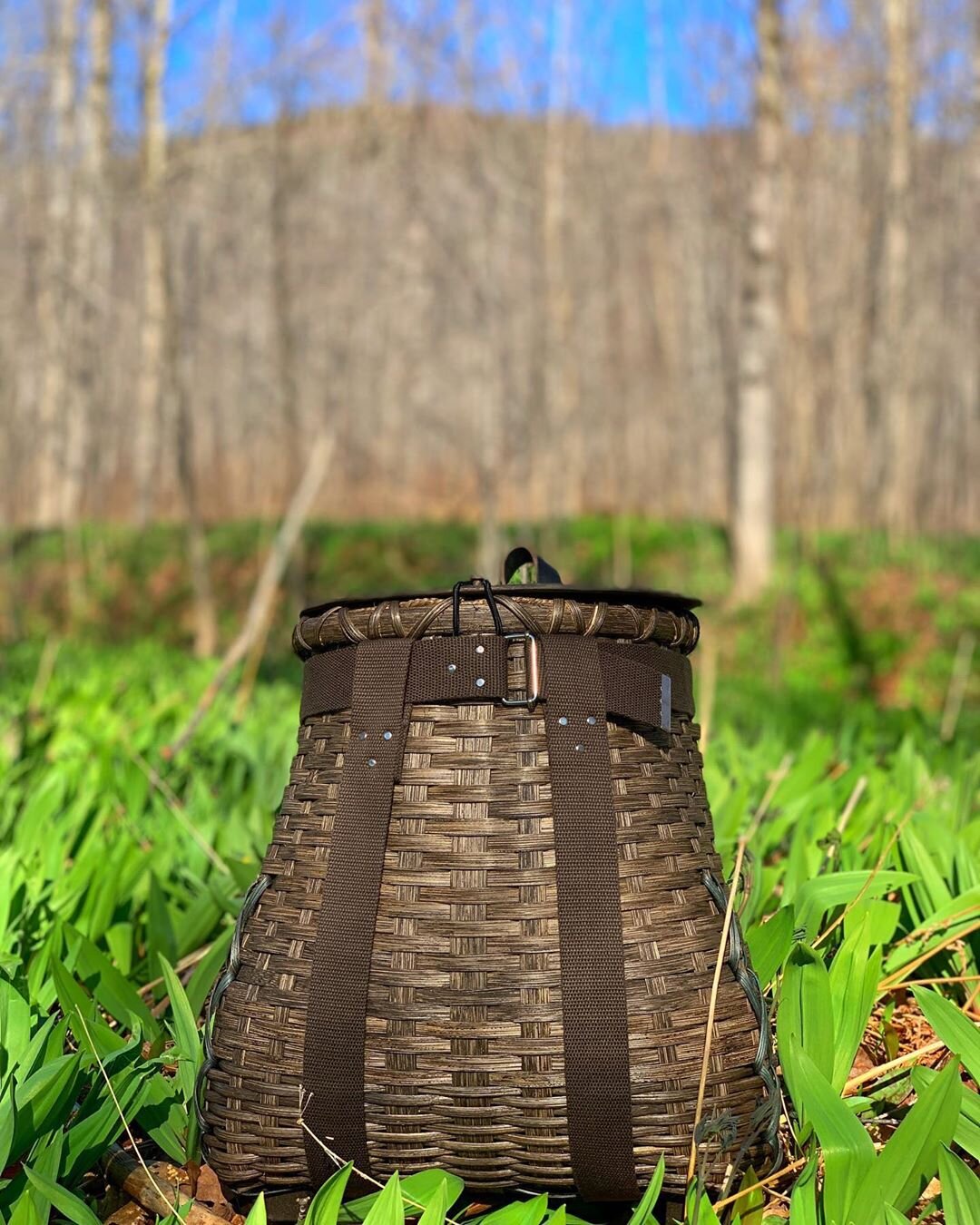The Pack Basket
My pack basket nestled in an early spring colony of wild leeks — Allium tricoccum.
It's fascinating the way baskets remain a relevant technology to the forager. Despite being an early and somewhat “primitive” development, they’re still — even today — the optimal tool for the job.
I’m someone who likes to stay on top of technological advancements in gear. I like to hunt and fish with modern equipment. Of course, there’s plenty of people who prefer to pursue fish and game with more primitive implements — longbows and atlatls or handmade hooks and line. That’s not me. But when it comes to foraging I still prefer the handmade wooden basket.
I’m not just being nostalgic, baskets have many advantages over industrially manufactured containers.
For instance, a basket is resilient. It has flex and give. It’s shock-absorbing but non-collapsing, making them very comfortable to carry while still protecting their contents. A backpack carries well but tends to crush delicate leaves, flowers, fruits, or fungal fruit bodies. A bucket has rigidity but can be awkward to carry and doesn’t drain or breath.
Baskets drain, so any excess moisture can flow out. And they breathe very well, allowing airflow in and around plants and mushrooms, keeping plants from wilting and mushrooms from getting slimy. The openings in the weave allow moisture, heat, and air to pass through yet still protect your produce from direct sunlight.
While a plastic tub or an agricultural crate is a great tool for the farmer, they're cumbersome to carry in and out of the field. I use them at home to dry and store food, but almost always take a pack basket into the woods when it’s harvest time.
If you’d #RatherHuntGather and like to eat #WildFed then a good pack basket is vital. They're just as useful today as they were 10,000 years ago.

